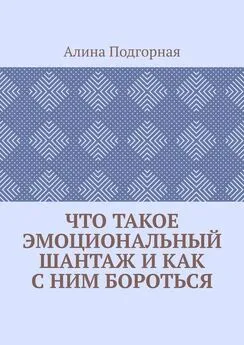Полина Лосева - Против часовой стрелки. Что такое старение и как с ним бороться
- Название:Против часовой стрелки. Что такое старение и как с ним бороться
- Автор:
- Жанр:
- Издательство:Альпина нон-фикшн
- Год:2020
- Город:Москва
- ISBN:978-5-0013-9314-6
- Рейтинг:
- Избранное:Добавить в избранное
-
Отзывы:
-
Ваша оценка:
Полина Лосева - Против часовой стрелки. Что такое старение и как с ним бороться краткое содержание
В своей книге биолог и научный журналист Полина Лосева выступает в роли адвоката современной науки о старении и рассказывает о том, чем сегодня занимаются геронтологи и как правильно интерпретировать полученные ими результаты. Кто виноват в том, что мы стареем? Что может стать нашей защитой от старости: теломераза или антиоксиданты, гормоны или диеты? Биологи пока не пришли к единому ответу на эти вопросы, и читателю, если он решится перейти от размышлений к действиям, предстоит сделать собственный выбор.
Эта книга станет путеводителем по современным теориям старения не только для биологов, но и для всех, кому интересно, как помочь своему телу вести неравную борьбу со временем.
Против часовой стрелки. Что такое старение и как с ним бороться - читать онлайн бесплатно ознакомительный отрывок
Интервал:
Закладка:
Li Y. M., Tan A. X., Vlassara H. Antibacterial activity of lysozyme and lactoferrin is inhibited by binding of advanced glycation – modified proteins to a conserved motif // Nature Medicine. 1995 Oct; 1: 1057–1061.
173
Nass N. Glycation of PDGF results in decreased biological activity // The International Journal of Biochemistry & Cell Biology.. 2010 May; 42 (5): 749–754.
174
Monnier V. M., Cerami A. Nonenzymatic browning in vivo: possible process for aging of long-lived proteins // Science. 1981 Jan; 211 (4481): 491–493.
175
Terman A. Garbage catastrophe theory of aging: imperfect removal of oxidative damage? // Redox Report. 2001; 6 (1): 15–26.
176
Pamplona R. Membrane phospholipids, lipoxidative damage and molecular integrity: A causal role in aging and longevity // Biochimica et Biophysica Acta (BBA) – Bioenergetics.. 2008 Oct; 1777 (10): 1249–1262.
177
Stillwell W., Wassall S. R. Docosahexaenoic acid: membrane properties of a unique fatty acid // Chemistry and Physics of Lipids. 2003 Nov; 126 (1): 1–27.
178
Nakamura M. T., Nara T. Y. Structure, function and dietary regulations of Δ6, Δ5 and Δ9 desaturases // Annual Review of Nutrition. 2004 Jul; 24: 345–376.
179
Solfrizzi V. et al. Unsaturated fatty acids intake and all-causes mortality: a 8.5-year follow-up of the Italian Longitudinal Study on Aging // Experimental Gerontology.. 2005 Apr; 40 (4): 335–343.
180
Aung T. et al. Associations of Omega-3 Fatty Acid Supplement Use With Cardiovascular Disease Risks // JAMA Cardiology. 2018 Mar; 3 (3): 225–233.
181
Simopoulos A. P. The importance of the ratio of omega-6/omega-3 essential fatty acids // Biomedicine & Pharmacotherapy.. 2002 Oct; 56 (8): 365–379.
182
Haddad L. S., Kelbert L., Hulbert A. J. Extended longevity of queen honey bees compared to workers is associated with peroxidation-resistant membranes // Experimental Gerontology.. 2007 Jul; 42 (7): 601–609.
183
Johnson A. A., Stolzing A. The role of lipid metabolism in aging, lifespan regulation, and age‐related disease // Aging Cell. 2019 Sep; 18 (6): e13048.
184
Bozek K. et al. Lipidome determinants of maximal lifespan in mammals // Scientific Reports. 2017 Jan; 7: 5.
185
Gladyshev V. N. Aging: progressive decline in fitness due to the rising deleteriome adjusted by genetic, environmental, and stochastic processes // Aging Cell. 2016 Apr; 15 (4): 594–602.
186
Golubev A., Hanson A. D., Gladyshev V. N. Aging: progressive decline in fitness due to the rising deleteriome adjusted by genetic, environmental, and stochastic processes // Journal of Biological Chemistry. 2017 Apr; 292: 6029–6038.
187
Li W. & Vijg J. Measuring genome instability in aging – a mini-review // Gerontology. 2012 Feb; 58 (2): 129–138.
188
Kaushik S. & Cuervo A. M. Proteostasis and aging // Nature Medicine. 2015 Dec; 21: 1406–415.
189
Richard P. Shefferson, Owen R. Jones, Roberto Salguero-Gómez. The evolution of senescence in the tree of life. Cambridge University Press, 2017.
190
Arrojo e Drigo R. et al. Age mosaicism across multiple scales in adult tissues // Cell Metabolism. 2019 Aug; 30 (2): 343–351. E3.
191
Xu M. et al. JAK inhibition alleviates the cellular senescence-associated secretory phenotype and frailty in old age // PNAS. 2015 Nov; 112 (46): E6301–E6310.
192
Waaiker M. E. C. et al. Are skin senescence and immunosenescence linked within individuals? // Aging Cell. 18 (4): e12956.
193
Ogrodnik et al. Cellular senescence drives age-dependent hepatic steatosis // Nature Communications. 2017 Jun; 8: 15691.
194
Leon O. H. et al. Local clearance of senescent cells attenuates the development of post-traumatic osteoarthritis and creates a pro-regenerative environment // Nature Medicine. 2017 Apr; 23: 775–781.
195
Ogrodnik et al. Obesity-induced cellular senescence drives anxiety and impairs neurogenesis // Cell Metabolism. 2019 Jan; 29 (5): 1061–1077. E8.
196
Galluzzi et al. Molecular mechanisms of cell death: recommendations of the Nomenclature Committee on Cell Death 2018 // Cell Death & Differentiation. 2018 Jan; 25: 486–541.
197
Smith J. R., Pereira-Smith O. M., Schneider E. L. Colony size distributions as a measure of in vivo and in vitro aging // PNAS. 1978 Mar; 75 (3): 1353–1356.
198
Gnani D. et al. An early‐senescence state in aged mesenchymal stromal cells contributes to hematopoietic stem and progenitor cell clonogenic impairment through the activation of a pro‐inflammatory program // Aging Cell. 2019 Mar; 18 (3): e12933.
199
Oviedo N. J., Beane S. W. Regeneration: The origin of cancer or a possible cure? // Seminars in Cell & Developmental Biology.. 2009 Jul; 20 (5): 557–564.
200
Xu M. et al. Senolytics improve physical function and increase lifespan in old age // Nature Medicine. 2018 Jul; 24: 1246–1256.
201
Cм. п. 44.
202
Zhu Y. et al. The Achilles' heel of senescent cells: from transcriptome to senolytic drugs // Aging Cell. 2015 Mar; 14 (4): 644–658.
203
Zhang R. et al. Formation of macroH2A-containing senescence-associated heterochromatin foci and senescence driven by ASF1a and HIRA // Developmental Cell. 2005 Jan; 8 (1): 19–30.
204
Muñoz-Espín. D. & Serrano M. Cellular senescence: from physiology to pathology // Nature Reviews Molecular Cell Biology. 2014 Jun; 15: 482–496.
205
Tsurumi A. & Li W. Global heterochromatin loss // Epigenetics. 2012 Jul; 7 (7): 680–688.
206
Hayflick L. The limited in vitro lifetime of human diploid cell strains // Experimental Cell Research. 1965 Mar; 37 (3): 614–636.
207
Jung T., Höhn A., Grune T. Lipofuscin: detection and quantification by microscopic techniques. // Methods in Molecular Biology. 2010; 594: 173–193.
208
Pincus Z., Mazer T. C., Slack F. J. Autofluorescence as a measure of senescence in C. elegans : look to red, not blue or green // Aging. 2016 May; 8 (5): 889–898.
209
Zhao Y. et al. Naked mole rats can undergo developmental, oncogene-induced and DNA damage-induced cellular senescence // PNAS. 2008 Feb; 115 (8): 1801–1806.
210
Cristofalo V. J. SA beta Gal staining: biomarker or delusion // Experimental Gerontology. 2005 Oct; 40 (10): 836–838.
211
Coppé J.-P. et al. Senescence-Associated Secretory Phenotypes Reveal Cell-Nonautonomous Functions of Oncogenic RAS and the p53 Tumor Suppressor // PLOS Biology. 2008 Dec; 6 (12): e301.
212
De Magalhães J. P. & Passos J. F. Stress, cell senescence and organismal ageing // Mechanisms of Ageing and Development. 2018 Mar; 170: 2–9.
213
См. п. 56.
214
Storer M. et al. Senescence is a developmental mechanism that contributes to embryonic growth and patterning // Cell. 2013 Nov; 155 (5): 1119–1130.
215
Freitas-Rodríguez. S. The role of matrix metalloproteinases in aging: Tissue remodeling and beyond // Biochimica et Biophysica Acta (BBA) – Molecular Cell Research.. 2017 Nov; 1864 (11, part A): 2015–2025.
216
Bonnans C., Chou J., Werb Z. Remodelling the extracellular matrix in development and disease // Nature Reviews Molecular Cell Biology. 2014 Nov; 15: 786–801.
217
Wilson A., Trumpp A. Bone-marrow haematopoietic-stem-cell niches // Nature Reviews Microbiology. 2006 Feb; 6: 93–106.
218
См. п. 72.
219
Cole M. A., Quan T., Voorhess J. J., Fisher G. J. Extracellular matrix regulation of fibroblast function: redefining our perspective on skin aging // Journal of Cell Communication and Signaling. 2018 Feb; 12: 35–43.
220
Mavrogonatou E., Pratsinis H., Papadopoulou A., Karamanos N. K., Kletsas D. Extracellular matrix alterations in senescent cells and their significance in tissue homeostasis // Matrix Biology. 2019 Jan; 75–76: 27–42.
221
См. п. 71.
222
Segel M. et al. Niche stiffness underlies the ageing of central nervous system progenitor cells // Nature. 2019 Aug; 573: 130–134.
223
Choi H. R. et al. Restoration of senescent human diploid fibroblasts by modulation of the extracellular matrix // Aging Cell. 2010 Nov; 10 (1): 148–157.
224
Pavlidou T. et al. Metformin Delays Satellite Cell Activation and Maintains Quiescence // Stem Cells International. 2019 Apr; 2019: 5980465.
225
Solanas G. et al. Aged stem cells reprogram their daily rhythmic functions to adapt to stress// Cell. 2017 Aug; 170 (4): 678–692. E20.
226
Ahmed A. S. I., Sheng M. H. C., Wasnik S., Baylink D. J., Lau K.-H. W. Effect on aging on stem cells // World Journal of Experimental Medicine. 2017 Feb; 7 (1): 1–10.
227
Martín‐Suárez. S., Valero J., Muro‐García. T., Encinas J. M. Phenotypical and functional heterogeneity of neural stem cells in the aged hippocampus // Aging Cell. 2019 Apr; 18 (4): e12958.
228
Udroiu I. & Sgura A. Rates of erythropoiesis in mammals and their relationship with lifespan and hematopoietic stem cells aging // Biogerontology. 2019 Mar; 20: 445–456.
229
Nicaise A. M. et al. Cellular senescence in progenitor cells contributes to diminished remyelination potential in progressive multiple sclerosis // PNAS. 2019 Apr; 116 (18): 9030–9039.
230
Lewis-McDougall F. et al. Aged‐senescent cells contribute to impaired heart regeneration // Aging Cell. 2019 Mar; 18 (3): e12931.
231
Penzo-Méndez A. I., Chen Y.-J., Li J., Witze E. S., Stanger B. Z. Spontaneous cell competition in immortalized mammalian cell lines // PLOS One. 2015 Jul; 10 (7): e0132437.
232
Morata G. & Ripoll P. Minutes: Mutants of Drosophila autonomously affecting cell division rate // Developmental Biology. 1975 Feb; 42 (2): 211–221.
233
Rhiner C. et al. Flower Forms an Extracellular Code that Reveals the Fitness of a Cell to its Neighbors in Drosophila // Developmental Cell. 2010 Jun; 18 (6): 985–998.
234
Merino M. M., Levayer R., Moreno E. Survival of the Fittest: Essential Roles of Cell Competition in Development, Aging, and Cancer // Trends in Cell Biology. 2016 Oct; 26 (10): 776–788.
Читать дальшеИнтервал:
Закладка:










